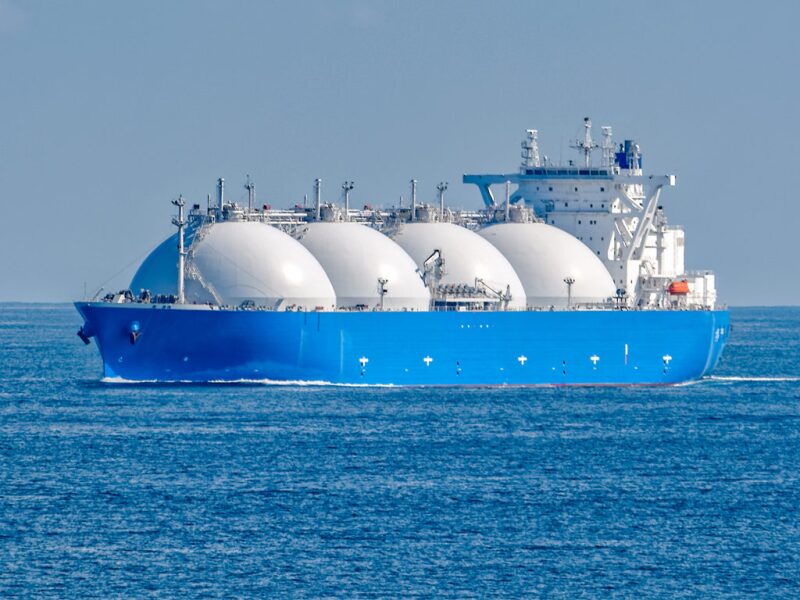The International Gas Union's (IGU) recent report on world LNG markets found that the trade increased by only 1.4 mt to 356.1 mt compared to 2019 supported by increased exports from the US and Australia, together adding 13.4 mt of exports. Asia Pacific and Asia again imported the most volumes in 2020, together accounting for more than 70% of global LNG imports. Asia also accounted for the largest growth in imports in 2020—adding 9.5 mt of net LNG imports vs. 2019.
While 20 mtpa in liquefaction capacity was brought on stream in 2020, all in the US, startup of several liquefaction trains in Russia, Indonesia, the US, and Malaysia were delayed as a result of the pandemic, according to the report. The only project that was sanctioned in 2020 was the 3.25-mtpa Energia Costa Azul facility in Mexico, and in early 2021 Qatar took final investment decision (FID) on four expansion trains totaling 32 mtpa.
With additional new projects proposed, global pre-FID volumes stand at 892.4 mtpa, most of which are in North America. Global liquefaction capacity would increase threefold if all these projects materialize, which is unlikely. Most of the proposed capacity is in North America (604.4 mtpa), with 351.6 mtpa located in the US, 227.8 mtpa in Canada, and 25 mtpa in Mexico.
The report found that the COVID-19 pandemic was a key factor in the low volume of sanctioned liquefaction capacity in 2020. Lockdowns and supply chain issues stagnated plant construction, and companies delayed FIDs on potential liquefaction projects by several years due to the uncertain economic climate.
“Global LNG market pricing experienced a turbulent year,” said Joe Kang, president of the IGU in a letter included in the report. “Spot prices of cargoes trading in the Atlantic and Asia Pacific basins plummeted to record lows in the first 6 months, before reaching record highs at the start of 2021. Pricing responded to COVID-19 impacts on demand, an initially well-supplied market, and high storage levels in some markets, followed by a cold winter and shipping constraints.”
There were no announcements of LNG plants being decommissioned in 2020, according to the report. The Kenai LNG plant in Alaska, which has been dormant since the autumn of 2015, received approvals in December 2020 from the Federal Energy Regulatory Commission to bring the plant back on line as a limited-use import facility. The Marsa El Brega LNG plant in Libya halted production in 2011, and there are currently no plans to bring it back on line. In Egypt, plans to restart the Damietta LNG (5.0 mtpa) plant have progressed, with its first cargo lifted in late February 2021. Damietta LNG was idled in 2012 after feed gas to the plant was diverted for use in the domestic market.
To date, there is 43.3 mtpa of capacity at operational LNG production trains that are more than 35 years old, including trains at Brunei LNG, ADGAS LNG in the UAE, Arzew LNG in Algeria, and MLNG in Malaysia. There have been no major upgrading plans announced for these plants in 2020.
With a sizable number of liquefaction projects being delayed in 2020, the spotlight is on this year. However, with COVID-19 still prevalent in many parts of the world, it is uncertain how this will continue to impact liquefaction projects. It seems likely that future liquefaction investments will continue to be underpinned by long-term sales and purchase agreements to secure financing, as demonstrated by the new projects that came on line in 2020, such as Elba Island and Cameron LNG.
The significant number of FIDs which were taken in 2019 implied that developers believed a glut in the market was expected to fade after 2020, and their volumes would find markets. However, 2020 has shifted opinions on both the supply side with almost no FIDs taken and most projects delayed, as well as the demand side, although implications may be shorter lived given shorter timelines to build out regasification infrastructure and signals of demand recovery in significant markets, according to the report. Uncertainty however remains as parts of the world remain under lockdown due to the pandemic.
The total number of active LNG vessels reached 572 at the end 2020, including 37 floating storage and regasification units and 4 floating storage units. The report noted that 35 new vessels were added to the LNG shipping fleet in 2020. Notably, except for one, all new vessels are equipped with membrane containment systems, and 23 of them feature X-DF propulsion systems. The number of LNG voyages, however, only increased by 1%, largely due to demand impact of COVID-19.
Global regasification capacity increased by 19 mtpa in 2020. As of February 2021, the world’s regas capacity stood at 850.1 mtpa. Four new terminals and four expansion projects at existing terminals started importing cargoes – with the majority in the Asia Pacific region. There are now 39 markets that are equipped with LNG receiving capabilities. As of February 2021, there was 147.3 mtpa of regasification capacity under construction, of which 72.3 mtpa have planned startup dates in 2021. Some of these are located in new importing markets such as Ghana, El Salvador, Vietnam, and Nicaragua. Offshore regasification capacity increased by 5.6 mtpa, bringing the global floating and offshore regasification capacity to 115.5 mtpa as of last February.

